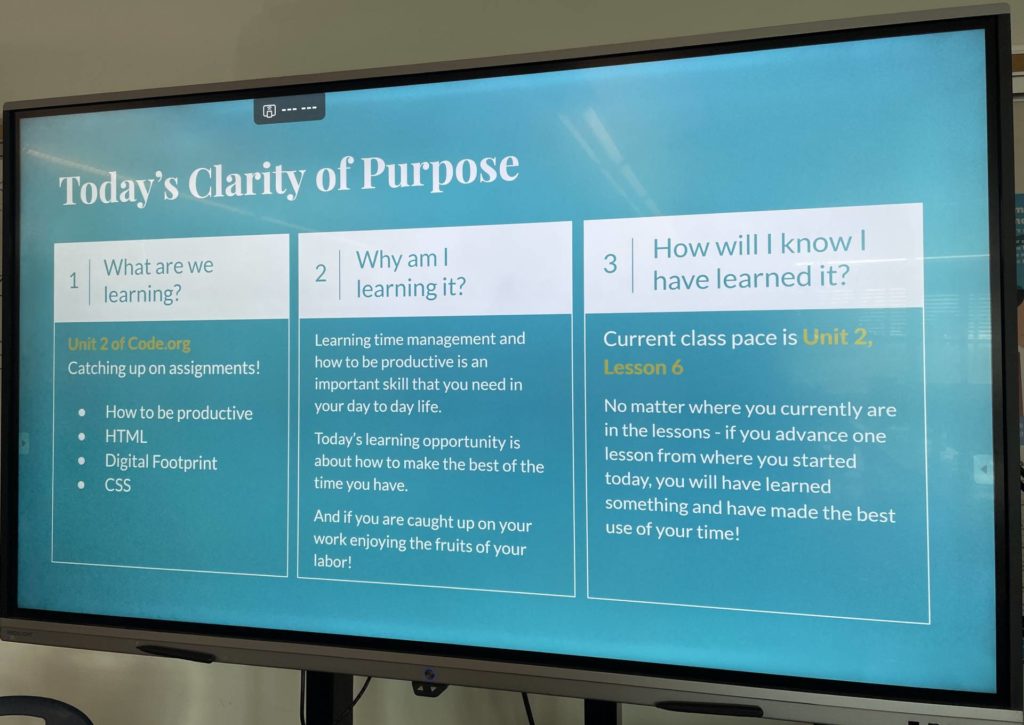It’s been a long time since I added anything to my blog, and here’s my current reason why: The past year has been a very busy one for me, where I am working long days pretty consistently. I started a new job for the San Diego Unified School District as a College, Career and Technical Education teacher, teaching Computer Science at Lincoln High School.
When it comes to web development, I enjoy all the aspects of it and was looking forward to sharing my passion of web design and development with students. It’s taken the better part of the school year, but I finally feel like I have struck the right balance between assignments, instruction and grading. The process has been rough, but worth it. I am deeply satisfied by the work I do, even if at times I am a bit frustrated by various factors. I am pretty sure that many people feel like that about their jobs.
One of the things we do as educators is continue to educate ourselves. This can be through classes via the district, another educational institution, or any number of educational content available online. I love YouTube videos that demonstrate a new skill or technique in one of the many types of content I teach. I even make some of those myself, especially for my new students.
I’ve been working towards completing a micro-credential for the district related to the Quality Teaching Practices. There are several, but this one is: Clarity of Purpose.
What I am going to say here is going to sound like a no-brainer but here it goes…
If we are clear with ourselves and our intention, it is easier to be clear with others. When we are clear with others it makes the material easier to understand, to learn and to not be as frustrating.
Well, yes. Of course. Duh. Still, sometimes it takes experience smacking you in the face to drive the lesson home.
When I was initially introduced to Clarity of Purpose, I felt like I was doing that already, but I was open to learning more. I added slides to my lectures to kind of bring the students along with me as a way to show them my intention.
Maybe I was clear enough for the college students I previously taught, but High School is a whole different world and perspective. Developmentally, the students are in a very different place, especially the Freshmen who constituted the majority of my students.
My students showed me where I was not as clear as I had thought. They did this in a wide variety of ways, but the big one was showing me where my instruction was a little vague by not following my instructions as I intended (or code.org intended). I could see how the words were being misinterpreted/misunderstood. I sometimes wondered if they were being read at all. It has been a good, as some might say, learning experience!

It is my work to continue to learn and grow as an educator – how to be more clear not only in instruction but in expected outcomes too. What do I want or expect out of a given lesson? If I do not know or am unsure, I cannot communicate these outcomes effectively.
How do I orient a lesson around learning outcomes and make it clear for the students what they are going to learn? How can I invite students to be part of that discussion and take some ownership and pride in their learning?
This is important, not only for student buy-in but to help students to know what is expected of them so they can be more comfortable in the learning process. How can students achieve what we’re expecting from them if we do not tell them in a way they can understand? How can they be comfortable with the process if they do not know the journey’s end?
This is where Clarity of Purpose comes in. The more clear I am with myself, the more clear I can be with others – so that I can be the effective communicator that I want to be. Misinterpretations and miscommunications make things awkward and uncomfortable. Learning requires risk and trust. I have learned that is not a given that a student trusts their teacher enough to take a risk to learn something new.
That kind of trust takes time, patience, consistency and care. We can start by being clear with our students. That means being clear with ourselves.
So… What am I learning? How to be more clear with myself, with learning intentions and outcomes, with students. Making lesson plans with clear intentions helps considerably.
Why am I learning it? So I can be a better, more effective teacher and create better learning outcomes!
How will I know I have learned it? I don’t believe I will ever come to an end of learning it – but I will know that I am doing better by seeing the results in the work of my students.